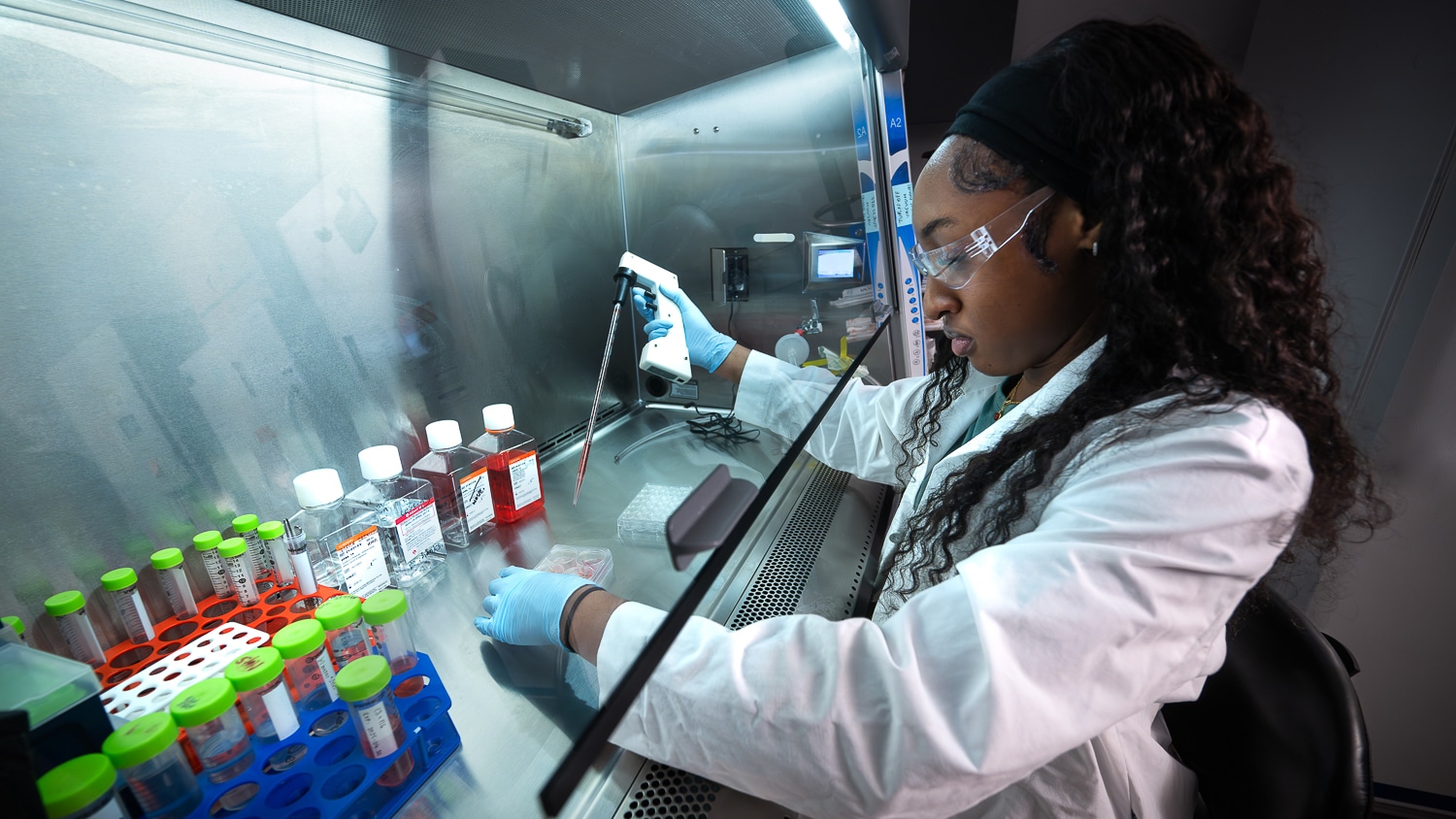Innovation From an Empty Bag

By Cameron Walker
Students in the Textile Technology/Textile Engineering Senior Design 2019-20 capstone course began the year with a manifold challenge; working in teams, they used recycled rice bags to design prototypes meant to solve real-world problems. This year’s winning teams transformed the bags into a menstrual pad, a fishing net and a solar lantern — functional designs that people in need can use and even construct themselves.
“This challenge puts the teams into an intense open-ended problem solving situation in the first week of class,” said Textile Engineering, Chemistry and Science (TECS) professor Russell Gorga, who co-directs the course with TECS associate professor Jesse Jur. “In this time, they not only need to think of the product they want to make and then go through the design cycle to establish the need through building and testing/validating and iterating, but also hone an oral presentation to pitch their product and justify the need. In addition, it forces them to work as a team to a deadline in a short period of time. This enables the team members to learn about the way each team member (including themselves) works in a group.”
The annual Rice Bag Challenge is sponsored by Rise Against Hunger, an international organization that annually distributes millions of meals around the world through community meal-packaging events. The rice for these meals comes in 50-pound bags; tens of thousands of these bags are thrown away each year, but Rise Against Hunger believes there is a better way. They hope that Wilson College of Textiles Senior Design students can repurpose the bags in a practical way to make life better for meal recipients while reducing their environmental footprint.
“They are looking for products that locals who receive the meals can actually make themselves and have utility in the community to improve quality of life and establish a sustainable enterprise,” said Gorga.
The Challenge
Teams of Senior Design students were tasked with creating a useful prototype that would solve a problem in developing areas around the world, using a maximum $10 budget and two rice bags. In one short week, they researched, brainstormed, designed and executed their prototype. At the end of the week, they pitched their product to the judges: Rise Against Hunger officials Edna Ogwangi, chief impact officer; Julia Banks, manager of donor strategy and operations; and Andi Dankert, director of donor relations and operations.

Team members Eden Cabrera, Carrie Gray, Kristen Poole and Relynne Wolf won first place with their design of a reusable menstrual pad.
“Each team member submitted ideas in a brainstorming session,” said Gray. “We each researched issues in developing countries and narrowed them down to issues that could be solved with textiles and the application of a rice bag. When we discussed the reusable menstrual pad, it had the most positive impact, ability to be completed in the timeline, and could be scalable and deployable in a number of countries.”

A fish net prototype earned team members Sally Gross, Gillian Armstrong, Tony Oh and Annali Evling second place.
“We decided to create a fish net because we thought about needs over wants,” said Annali Evling. “We started with food, shelter and water as the basic human needs and then developed ideas around those three topics, finally deciding on a fish net. We conducted research about developing countries and found that fish is a common food supply, so we knew there was a demand for a product that could help capture fish.”

Team members Rita Bardon, Shayan Barlas and Min Kim secured third place with their solar lantern.
“Our team wanted to create a product that could help a large amount of people in developing countries,” said Bardon. “We wanted it to solve a problem, and after some research, we found that 1.2 billion people are without access to electricity. We figured that if there was a simple solution to this problem, we could help children study, help store owners do business, help doctors perform on their patients, and overall, save lives. [Each year,] 4.6 million people die from in-house air pollution from burning solid fuels and kerosene lanterns to light their homes, so hopefully our solar-powered lanterns could reduce those numbers. On average, 20% of a household income [is spent] on kerosene for lighting their homes. With our solar-powered lantern, the cost would go way down. Overall, our lantern would have impacts environmentally and economically, and hopefully save people’s lives.”
Other designs included cooling socks, an apron, a zero-energy air conditioner, a gravity shower, a baby carrier, a hammock, a diaper, a tote bag and more.
Follow the Wilson College of Textiles:
Twitter: @NCStateWilson
Instagram: @NCStateWilson


